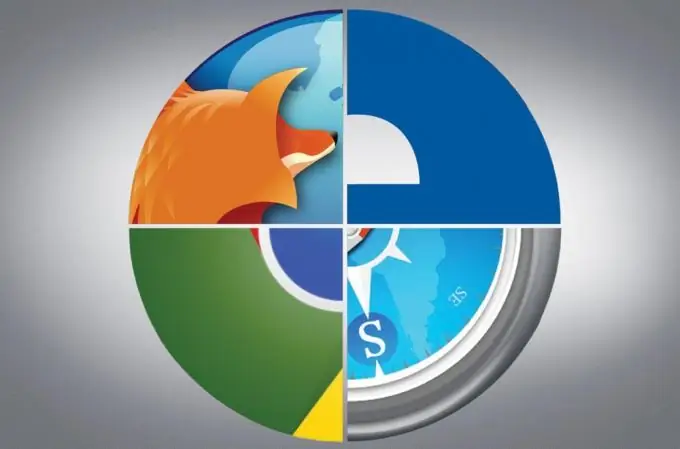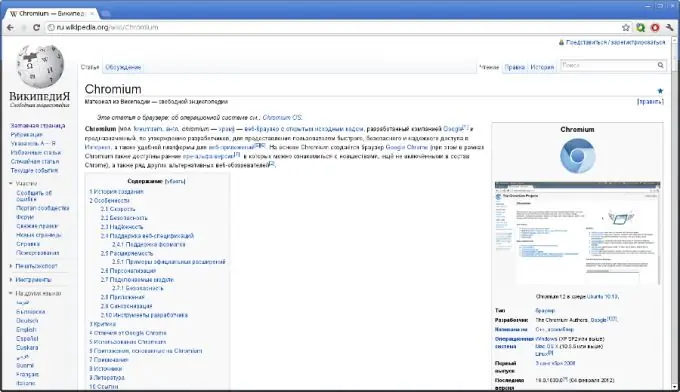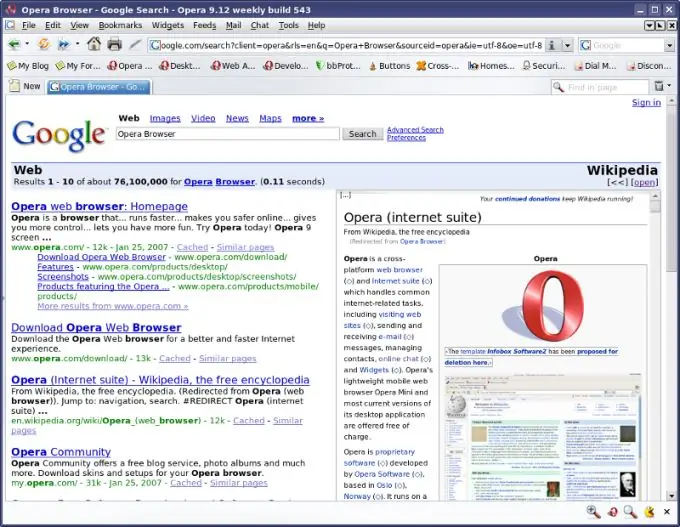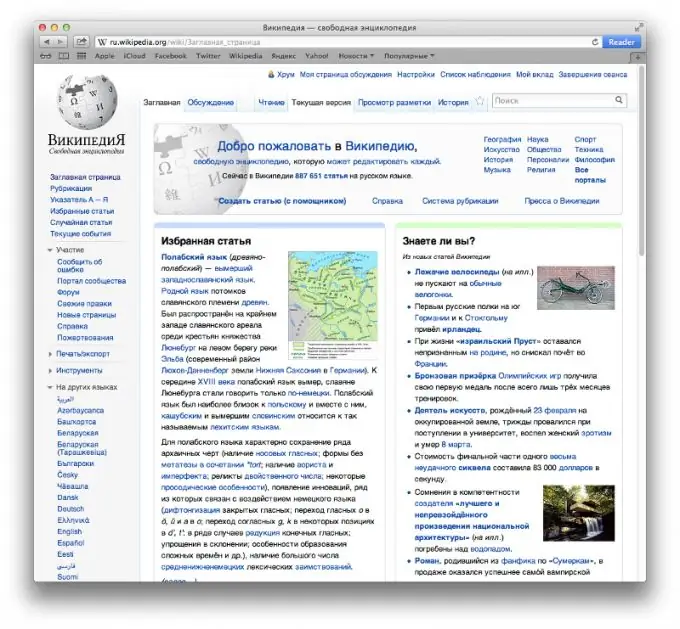- Author Lauren Nevill [email protected].
- Public 2024-01-11 01:04.
- Last modified 2025-01-23 15:15.
The rapid development of the Internet has led to the formation of high competition in the market of web browsers - programs without which no user of the World Wide Web can do without. Providing the ability to navigate and browse the web is the primary concern of any Internet browser. However, each browser does it differently, and also adds its own unique set of features and functions - from an email client to a multi-process architecture. To choose the most suitable browser program for yourself, you need to know the main differences between them.

Instructions
Step 1
Mozilla Firefox. The most popular open source Internet browser. It is characterized by fast operation, user-friendly interface, security and extreme expandability and deep customization. Has a huge number of plugins and add-ons. It is actively developed by programmers from all over the world.

Step 2
Chromium. Free open source web browser. Focuses on speed, security and integration with web applications. The developers declare it as the safest browser. Uses multiprocessing architecture for enhanced reliability. It has good extensibility.

Step 3
Google Chrome. Browser developed by Google based on the free Chromium browser. Open source. Differs in increased stability of work, safety and speed. Uses integration with Google services, a mechanism for dividing tabs into processes, which protects other tabs if problems arise with one.

Step 4
Opera. A popular browser that also uses the Chromium engine. It is closed source. Has a high speed of work. It is focused on the convenience of using the mouse using the so-called gestures. It is considered the fifth most popular in the world. Has rich functionality, including mail and torrent clients, address book, IRC client and other widgets.

Step 5
Yandex browser. A free browser created in 2012 by Yandex based on the open source Chromium engine. It features deep integration with various Yandex services (mail, search, etc.). Has the so-called "Turbo" mode - accelerated loading of web pages. Has good security and features of other popular web browsers. It is under active development.

Step 6
Safari. Internet browser developed by Apple Corporation. It is used on all devices it produces. There is a version for Microsoft Windows XP and Vista, also for mobile devices. Based on the open source WebKit engine. Focused on high performance and beautiful web page rendering. On the available functions it is not inferior to other browsers.

Step 7
Internet Explorer. One of the oldest and most widely used web browsers. Developed in 1995 by Microsoft for its Windows operating system (it is the default browser in all versions). Has closed source and application security flaws. Actively supplanted by other (free) browsers.






